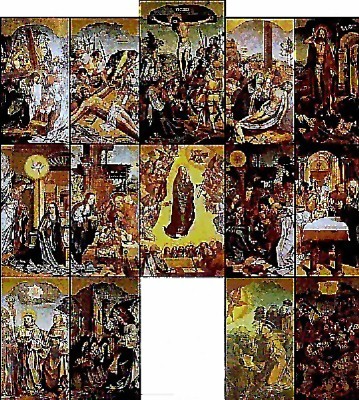|
| The Church and Altarpiece of the Convent of Setúbal: 15th and 16th centuries AD |

The late 15th-century church and convent of Jesus at Setúbal, and the early 16th-century altarpiece commissioned for it, are two of Portugal’s outstanding monuments of the Age of Exploration.
In the late 15th century the wet-nurse of prince (later King) Manuel obtained King John’s permission to erect the Convent of Jesus at Setúbal. This building, on which work began in the 1490s, is the earliest example of the Renaissance architecture of Manueline Portugal, of which the Hieronymos (St Jerome) Monastery in Lisbon is the most famous example.
Between 1519 and 1530 AD, the altarpiece, one of the masterpieces of the Portuguese Renaissance, was commissioned by Queen Leonor. It constitutes fourteen large-scale oil-paintings on oak wood, which were probably painted in Lisbon by the artists Francisco Henriques and Master George Afonso.
The fourteen panels tell three stories: the Passion of Christ, the childhood of Jesus, and the story of the Franciscan saints. The panels are now displayed in appropriately maintained and secure conditions in the Setúbal Museum located in one of the convent’s buildings near the church.
© 1998 Oxfordshire Museum Service, Setúbal Museums and the Benaki Museum